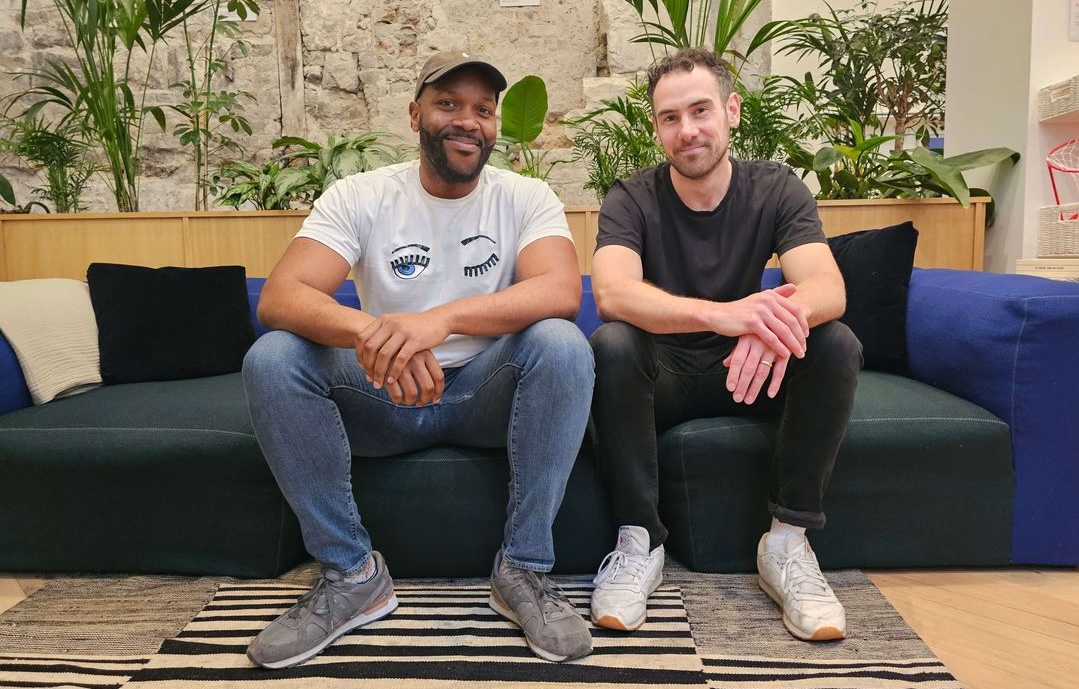“Measure Better,” an ImpactAlpha series in partnership with Acumen, features investment practitioners and thought leaders who are putting customers at the center of their impact strategies.
Clara Barby leads an initiative that has achieved something few in the impact measurement space thought possible: consensus.
Barby, a partner at Bridges Fund Management, is CEO of the Impact Management Project. The “IMP” has worked with some 2,000 practitioners to build shared norms for impact measurement and management. Earlier this year, the IMP also began facilitating a network of standard-setting organizations – the IMP Network – to coordinate content so that enterprises and investors can have complete guidelines for measuring and managing impact.
Already the IMP has consensus that “all enterprises have positive and negative impacts on people and the planet, that managing impact means figuring out which of those impacts matter and then trying to prevent the negative and increase the positive,” Barby told Impactalpha.
Through the IMP, impact investing pioneers like Root Capital, Vox Capital and Nesta have come together with big legacy financial institutions. PGGM, BlackRock, AXA, UBS, Hermes and Barclays and other mainstream firms are increasingly looking to measure and manage impact for their clients.
Casting a wide net, says Barby, allows all investors to optimize “their impact given their particular constraints and capabilities.”
Barby and her team have worked with the Lean Data team at Acumen, where she was previously a portfolio manager, as well as Keystone Accountability and Social Value International, to put stakeholder feedback at the center of impact management. Says Barby, “A customer telling us that they think their quality of life has improved significantly from buying a product is pretty powerful.”
Measuring the impact of impact investments – by talking to customers themselves
A few years ago, Barby says, “there was a real danger that we were competing on how good our impact frameworks and measurement approaches were, rather than how much impact we have. Now, the industry is working together to make measuring and reporting impact “a pre-competitive issue. It’s something we need to work on together.”
ImpactAlpha: What is the Impact Management Project. How has it gained traction?
Clara Barby: Financial accounting standards are a social construct based on widely shared principles, a conceptual framework and disclosures. Widely shared accounting standards enable information about financial performance to flow along value chains and across borders, so that capital can as well.
On the impact side, we also need to move towards a widely shared social construct. And it needs to be one that allows for very different types of data to flow between stakeholders, which is a whole lot harder. We’re not dealing with apples to apples, we’re dealing with apples, pears and telephones.
Impact investors can gain real feedback from their portfolio companies’ customers. Do they want it?
That’s been the IMP endeavor – to get folks across ‘tribes’ to the table. Whether you’re trying to understand risk at a large asset manager or you’re a social entrepreneur trying to solve a really intractable local problem, it’s crucial that we can agree on the fundamentals, and on the kind of data we should be collecting, organizing and passing along the value chain.
IMP’s been created by so many participants that there’s real co-ownership of it. It doesn’t compete with specific frameworks because what it says is, “organizations will have their own spin on it. They will have their own scoring system or their own visualization for how they assess deals or present their reports, and maybe even their own terminology.” What we’re interested in is whether the widely-shared fundamentals are observable in whatever way they’ve chosen to do it.
For people who are already measuring and managing impact, the IMP consensus is basically a checklist. Are they actually sharing the kind of information that a broad cross-section of the market agrees is relevant?
ImpactAlpha: What are the fundamentals?
Barby: People agreed that all enterprises have positive and negative impacts on people and the planet. That managing impact means figuring out which of those impacts matter. And then trying to prevent the negative and increase the positive.
To understand which impacts matter, we need to look at five dimensions of impact performance. These are What outcome; Who experiences it, including how underserved they are in relation to the outcome; How much, which breaks out into scale, depth, duration and rate; Contribution, which is how that compares to the market; and Risk, which is, “Do I actually believe what you said you’ve done across these four dimensions?” Or, if you’re looking forward, “Do I actually believe you can do it?”
ImpactAlpha: Has there been uptake?
Barby: There were over 2,000 organizations involved, who have joined workshops and virtual sessions to debate, test and figure out the common outcomes denominators between all these different organizations. More than 40 organizations of the 2,000 came together to then develop materials on it all.
Then there was another group of organizations, probably about the same quantum, who co-authored specific guidance and case studies on different aspects of impact management.
ImpactAlpha: Is this the closest thing to a standard in impact accounting and measurement practice?
Barby: It’s a really good precursor to a standard for overall practice. But there’s more work to be done. It’s the closest we’ve got in the sense that different tribes have come together, including standard-setting organizations who work on specific parts of that practice for different audiences, to agree on what constitutes good impact measurement and management.
Lean Data plays a key role in the emerging standards. The IMP’s five dimensions of impact break out into 15 categories of disclosures that demonstrate performance. One of the categories is ‘importance of outcome to the stakeholder,’ which really lends itself to Lean Data.
Customer survey data that makes it simpler to embrace the complexity of impact investing
Surveying is also particularly helpful for understanding the degree of change that has occurred when you’re dealing with a qualitative outcome. A customer telling us that they think their quality of life has improved significantly from buying a product is pretty powerful. Surveys can also capture unintended outcomes, positive or negative, making them an important tool for managing impact risk. The IMP has worked with Acumen, Keystone Accountability and Social Value International to design survey questions across all five dimensions.
ImpactAlpha: How is the Impact Management Project and Lean Data relevant to market-rate seeking impact investors?
Barby: It’s absolutely relevant. If you look at the people who participated in the IMP, either through sponsorship or writing case studies, they are often from large commercial institutions. The content is for anyone who wants to measure and manage impact. And motivation can vary widely, from risk management to philanthropic purpose. Whatever the motivation, you need widely-shared conceptual logic.
ImpactAlpha: On the state of impact measurement, are you an optimist?
Barby: It’s definitely a positive moment for impact measurement. It is no longer a side workshop at conferences, but a plenary topic. And at a practical level I’m seeing really positive signs, which is that people are agreeing that this is pre-competitive.
Two years ago, there was a real danger that we were competing on how good our impact frameworks and measurement approaches were, rather than how much impact we have. Now, people are agreeing that measuring and reporting impact is a pre-competitive issue. It’s something we need to work on together. And that’s a really positive step forward.
ImpactAlpha: Has this set the bar for impact management, as larger firms enter impact investing?
Barby: We have painted a picture for anyone seeking to manage their impact. The shared fundamentals have set the bar for doing impact measurement and management well. The bar is not set in terms of what kind of impact you have.
Deeper, focused customer impact assessments can also deliver business value
To have the variety of goods and services we like to use, we need a mixed economy. Not every organization, nor every investor, can have what might be perceived as ‘high impact.’ We can strive for an economy where everyone is optimizing their impact given their particular constraints and capabilities. That will be an economy of different enterprises and different investors having very different kinds of impact. It’s not impact washing so long as you are being transparent.
ImpactAlpha: Understanding your place in the market…
Barby: Exactly, providing you say, “This is what we’re doing.” We’ve had some interesting conversations with investors who feel that the IMP effort has legitimized their ability to say, “You know what, we don’t actually have a specific focus when it comes to the type of outcomes, but we are really focused when it comes to who we want to generate positive impact for.” Or, in relation to impact risk, ”We only want to back business models whose impact is well-evidenced, and we’re committed to being open about the outcome.” I think that’s been really good.
ImpactAlpha: That does seem like a breakthrough.
Barby: Widespread impact measurement and management will result in a very big tent, within which we can differentiate businesses and investments based on their impact performance. A healthy mixed economy will have people sitting in different places.











